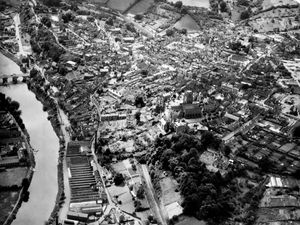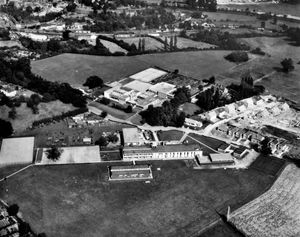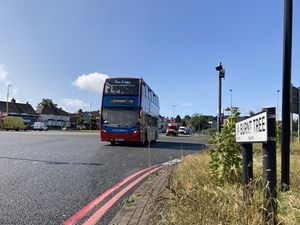Old aerial pictures reveal changing face of Bridgnorth
You know how it is. You return to a familiar place after a while, and find that it has all changed.

It used to happen after years away, but nowadays you only need to be away for months to return to find new housing springing up everywhere.
Such transformations seem to come in waves, and the 1960s in particular was a time of spectacular changes in which more unlucky towns saw their centres destroyed or diminished amid a fashion for traffic-free shopping precincts.
Happily historic Bridgnorth escaped that fate, but a series of aerial pictures in our archive are an opportunity for residents of today to see how the townscape has been altered over the decades, although the heart of the town remains much as it has always been.
Most of them are undated, but the time span seems to be from the early 1960s to 1967.
Let's take a closer look:
Picture one: The Bridgnorth people still know and love, with the River Severn on the left spanned by the ancient bridge, and the broad High Street running diagonally across the picture, with the town hall a central feature.

St Leonard's Church stands proud, while Bridgnorth railway station is at the top of the photo, with a loco and rolling stock on the tracks, proof that this undated photo must have been taken before the Severn Valley Railway closed in 1963 – it was of course later to be revived by enthusiasts as a heritage steam railway.
The track ran under the town through a tunnel, and the northwards part which took the line to the Ironbridge Gorge and Shrewsbury can be seen in the foreground.
Picture two: Generations of Bridgnorth schoolchildren will need no telling what this shows, but for the benefit of everybody else it is the town's two secondary schools at Oldbury Wells. Bridgnorth Secondary Modern School for Girls opened on September 8, 1959, and was only a stone's throw from Bridgnorth Boys' Secondary Modern School, which had opened in January 1958.

Bridgnorth readers will no doubt be able to tell us which is which, but in any event much later the schools on opposite sides of the road were to become one school, Oldbury Wells. As you can see, new housing is being built nearby.
Picture three: Bridgnorth in the 1960s was not just an attractive and historic town, it was an industrial town as well with some major industries. It long had a reputation as a centre of carpet making, and was a leader in the technological world thanks to the A T & E works. However, taking centre stage, well, top right anyway, in this view is the Star Aluminium factory, which was a relative newcomer at the time, having come to Bridgnorth in 1956.

The school to the left of it is a bit of a puzzler, as a look on Google Street View seems to show the site is today an Aldi car park, but – and we stand to be corrected by Bridgnorth readers – it may well be the old St Mary's infants school, which was built on Stourbridge Road to ease accommodation problems at St Mary's School.
Running diagonally across the photo is the A442 Kidderminster road and work is under way to build Hillside Avenue nearby.





